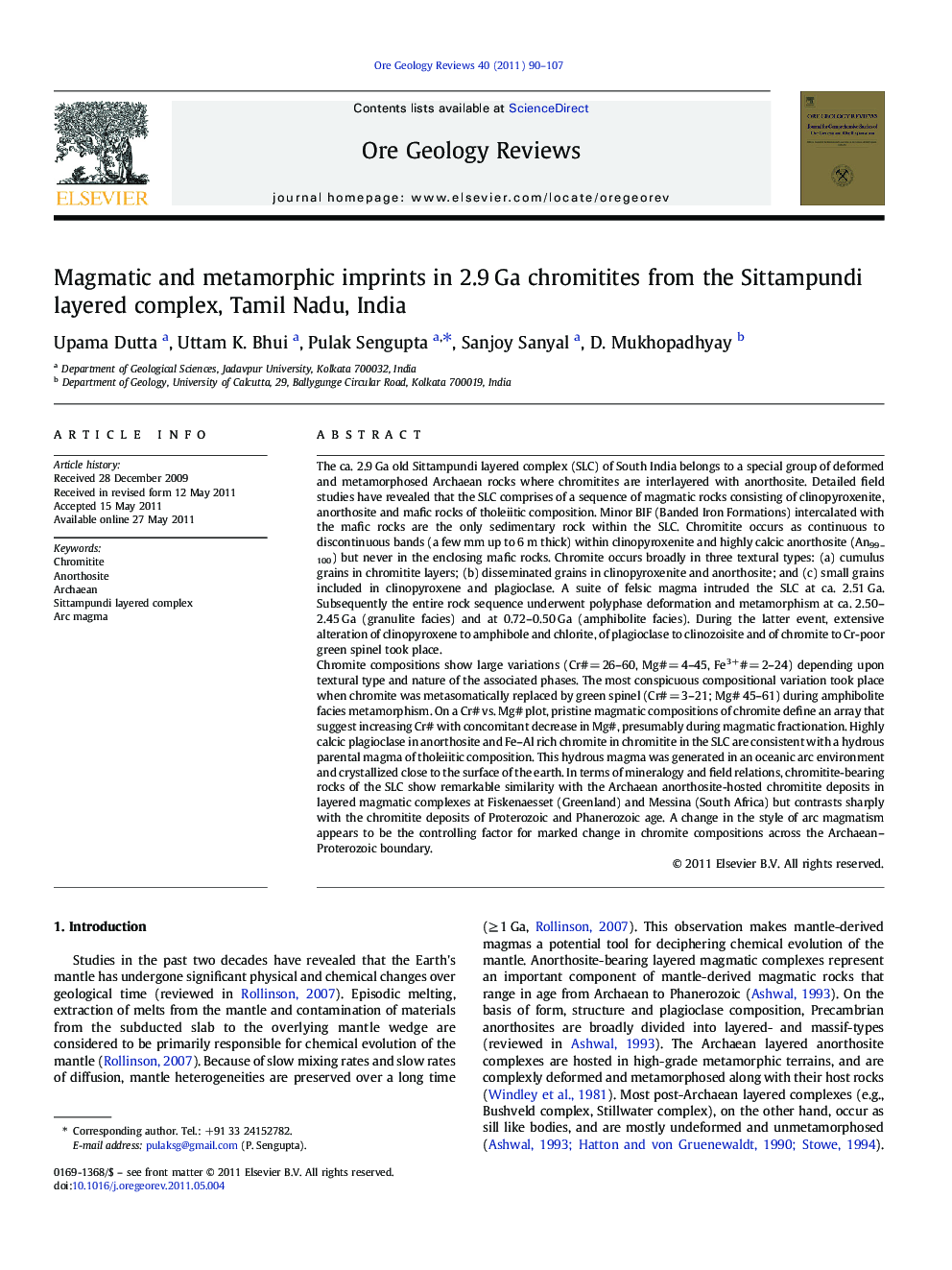| کد مقاله | کد نشریه | سال انتشار | مقاله انگلیسی | نسخه تمام متن |
|---|---|---|---|---|
| 4697722 | 1637260 | 2011 | 18 صفحه PDF | دانلود رایگان |

The ca. 2.9 Ga old Sittampundi layered complex (SLC) of South India belongs to a special group of deformed and metamorphosed Archaean rocks where chromitites are interlayered with anorthosite. Detailed field studies have revealed that the SLC comprises of a sequence of magmatic rocks consisting of clinopyroxenite, anorthosite and mafic rocks of tholeiitic composition. Minor BIF (Banded Iron Formations) intercalated with the mafic rocks are the only sedimentary rock within the SLC. Chromitite occurs as continuous to discontinuous bands (a few mm up to 6 m thick) within clinopyroxenite and highly calcic anorthosite (An99–100) but never in the enclosing mafic rocks. Chromite occurs broadly in three textural types: (a) cumulus grains in chromitite layers; (b) disseminated grains in clinopyroxenite and anorthosite; and (c) small grains included in clinopyroxene and plagioclase. A suite of felsic magma intruded the SLC at ca. 2.51 Ga. Subsequently the entire rock sequence underwent polyphase deformation and metamorphism at ca. 2.50–2.45 Ga (granulite facies) and at 0.72–0.50 Ga (amphibolite facies). During the latter event, extensive alteration of clinopyroxene to amphibole and chlorite, of plagioclase to clinozoisite and of chromite to Cr-poor green spinel took place.Chromite compositions show large variations (Cr# = 26–60, Mg# = 4–45, Fe3+# = 2–24) depending upon textural type and nature of the associated phases. The most conspicuous compositional variation took place when chromite was metasomatically replaced by green spinel (Cr# = 3–21; Mg# 45–61) during amphibolite facies metamorphism. On a Cr# vs. Mg# plot, pristine magmatic compositions of chromite define an array that suggest increasing Cr# with concomitant decrease in Mg#, presumably during magmatic fractionation. Highly calcic plagioclase in anorthosite and Fe–Al rich chromite in chromitite in the SLC are consistent with a hydrous parental magma of tholeiitic composition. This hydrous magma was generated in an oceanic arc environment and crystallized close to the surface of the earth. In terms of mineralogy and field relations, chromitite-bearing rocks of the SLC show remarkable similarity with the Archaean anorthosite-hosted chromitite deposits in layered magmatic complexes at Fiskenaesset (Greenland) and Messina (South Africa) but contrasts sharply with the chromitite deposits of Proterozoic and Phanerozoic age. A change in the style of arc magmatism appears to be the controlling factor for marked change in chromite compositions across the Archaean–Proterozoic boundary.
Research highlights
► In this study we describe the magmatic and metamorphic features present in the c.2.9 Ga old chromitite-bearing Sittampundi layered complex (SLC) of South India.
► Petrological features backed up my chromite chemistry and the presence of highly calcic plagioclase (An 99–100) in anorthosite indicate that SLC was a part of oceanic crust in supra-subduction zone setting.
► Fluid-rock interaction during Palaeo- and Neoproterozoic orogenesis caused significant compositional changes of chromite.
Journal: Ore Geology Reviews - Volume 40, Issue 1, September 2011, Pages 90–107